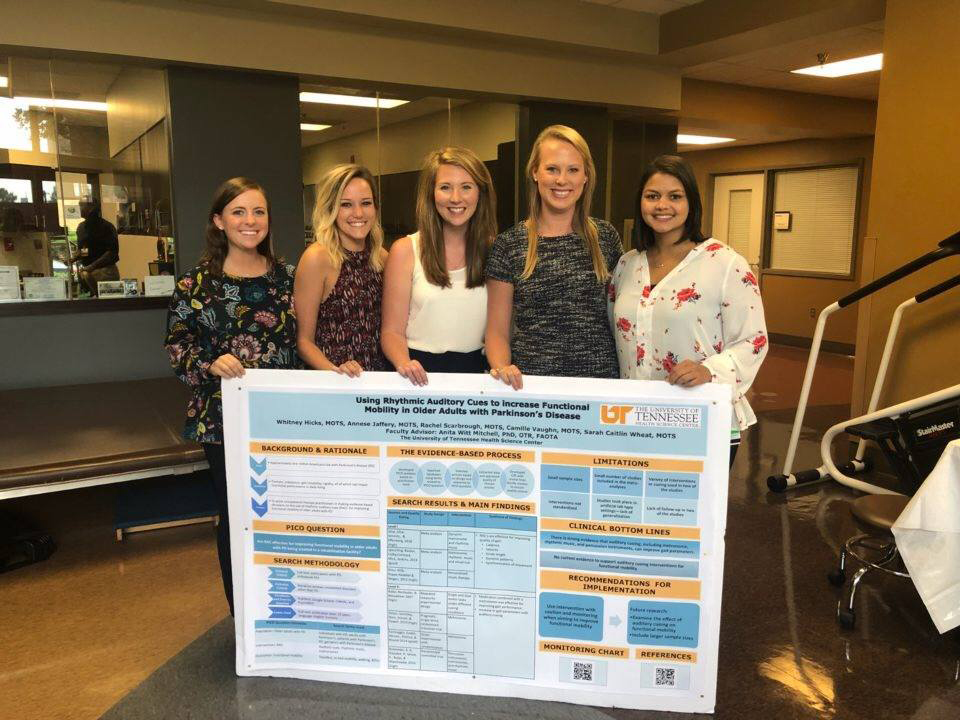
Master of Occupational Therapy Student Critically Appraised Topics
Faculty Advisor
Anita Witt Mitchell, PhD, OTR, FAOTA
Community Practitioner
Morgan Henry, MOT, OTR/L
DOI
10.21007/chp.mot2.2022.0017
Document Type
Poster
Publication Date
Spring 5-26-2022
Abstract
Children diagnosed with Cerebral Palsy often experience upper limb spasticity. Research has shown Botox injections in combination with occupational therapy can reduce the effects of spasticity in the upper limb. This literature review aims to determine how long is the appropriate duration of occupational therapy to administer after Botox injections to see decreased spasticity in the upper limbs.
Recommended Citation
Bray, Rachel MOT/S; Cabot, Tatum MOT/S; Clark, Peyton MOT/S; Goodman, Cameron MOT/S; Moore, Tarason MOT/S; and Napier, Claire MOT/S , "Effect of Botox and Therapy on Spasticity in Cerebral Palsy: A Critically Appraised Topic" (2022). Master of Occupational Therapy Student Critically Appraised Topics. Paper 19. http://dx.doi.org/10.21007/chp.mot2.2022.0017.
https://dc.uthsc.edu/mot2/19
CAT Project Portfolio
Included in
Investigative Techniques Commons, Medical Education Commons, Nervous System Diseases Commons, Occupational Therapy Commons, Therapeutics Commons


Comments
The accompanying presentation for this poster can be viewed here:
Effect of Botox and Therapy on Spasticity in Cerebral Palsy: A Critically Appraised Topic